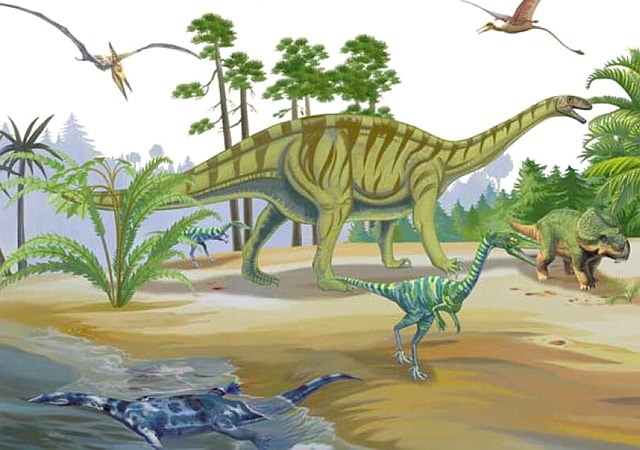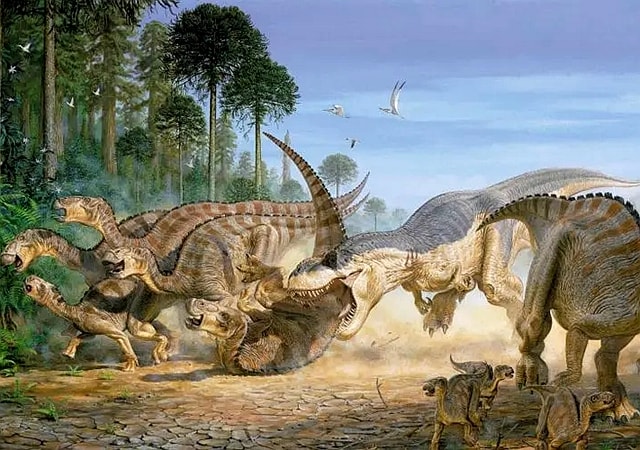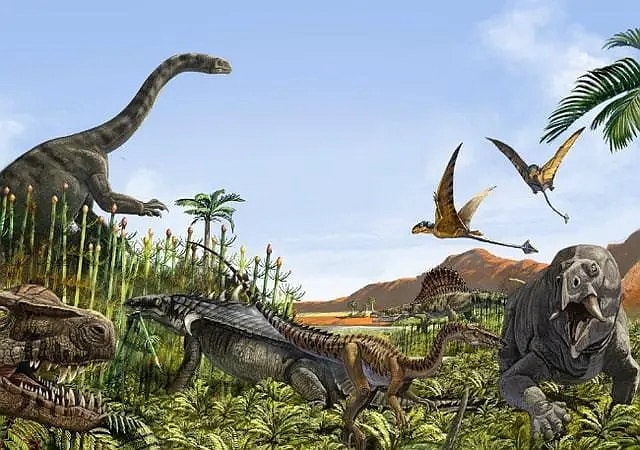Dinosaur Encyclopedia
Brief Overview of the Origin of Dinosaurs
Origin of Dinosaurs
Evolution of Life: From Water to Land
The Earth, formed approximately 4.6 billion years ago, witnessed the emergence of life around 3 billion years ago. Over the course of 3 billion years, life evolved from single-celled organisms to complex multicellular forms, leading to the diversification of animals, plants, and microorganisms.
The Rise of Amphibians and Reptiles: Paving the Way for Dinosaurs
Around 240 million years ago, a pivotal moment in the story unfolds as ancient reptiles adapted to terrestrial environments. This marked the beginning of a transformative era, setting the stage for the emergence of dinosaurs.

From Fish to Amphibians: Bridging the Gap
More than 400 million years ago, vertebrates, in the form of primitive fish, dominated Earth’s aquatic realms. Subsequently, around 300 million years ago, a significant shift occurred as certain fish transitioned to land, becoming the first amphibians. This shift was accompanied by the gradual appearance of land plants, bringing greenery to the Earth.
The Reign of Amphibians and the Advent of Reptiles
In the wake of amphibians’ dominance, a more advanced group of reptiles, known as archosaurs, emerged approximately 280 million years ago. This development paved the way for a subgroup that would eventually give rise to dinosaurs, initiating the “Age of Dinosaurs.”
Unveiling the Ancestors: Diapsid Reptiles and the Mystery of Origins
In the Late Permian or earlier, fossils of “Young’s Crocodile” in South Africa hinted at the diapsid reptiles’ role as ancestors of dinosaurs. However, the specific lineage leading to dinosaurs remained elusive.

Towards Dinosaurs: Evolutionary Milestones
As evolutionary divergence occurred, the emergence of “Archosaurs” in the early Triassic period marked a critical juncture. Notably, the “Erythrosuchus” showcased adaptations such as a three-pronged pelvic structure, enabling upright walking—a crucial step towards the eventual dominance of dinosaurs.
Closest Relatives to Dinosaurs: The Pakasuchus
Among the evolving archosaurs, the “Pakasuchus” displayed traits resembling small dinosaurs. Equipped with powerful hind limbs, diminishing forelimbs, and a large balancing tail, these creatures paved the way for the spectacular rise of dinosaurs.

Dinosaurs Unveiled: Top Predators of the Mesozoic Era
Approximately 200 million years ago, dinosaurs emerged as the top predators, dominating the Mesozoic Era in what is known as the “Age of Dinosaurs.” The unique characteristics of reptiles, allowing continuous growth, contributed to the evolution of larger and more advanced descendants—the mighty dinosaurs.
Unresolved Mysteries: The Enigma of Dinosaur Origins
Despite the wealth of archaeological data and scientific advancements, the exact origin of dinosaurs remains a mystery, prompting scientists to delve deeper into the fascinating world of prehistoric evolution.